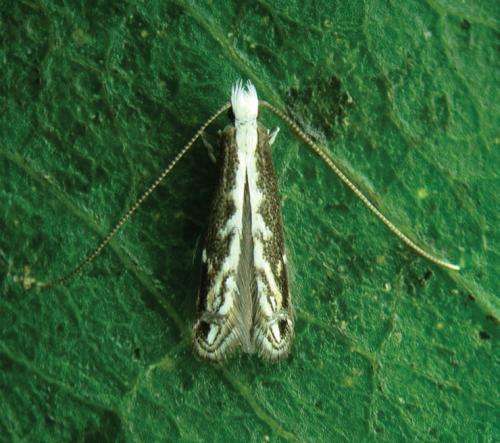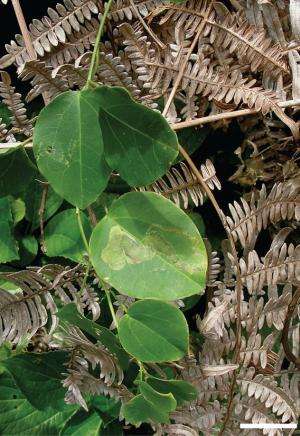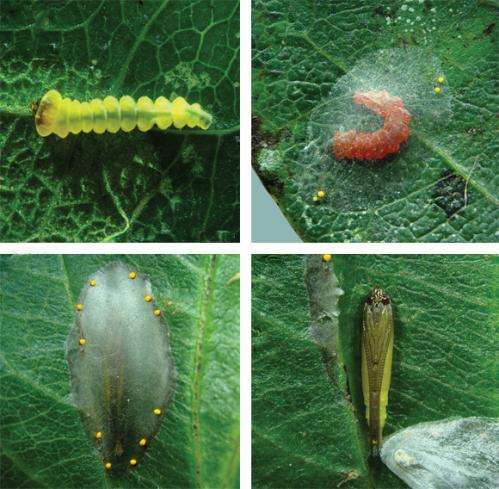The exciting life cycle of a new Brazilian leaf miner

A new species of leaf miner from the important family Gracillariidae has been recently discovered in the depths of the Brazilian jungle and described in the open access journal Zookeys. The Gracillariidae family is an ancient one with fossils dating back its origins to around 97 million years. Among the leaf miners of this family there are some species with significance as economic factors as well as agricultural pests. The new species, Spinivalva gaucha, is associated with representatives of the Passiflora plant genus among which is the economically important and favorite to many passion fruit, also native to Brazil.
The name of the new species is derived from the Portuguese term "Gaúcho" used in Brazil to describe the native inhabitants of the fertile southernmost Brazilian lowlands, the pampas. What makes this species especially interesting are the fascinating stages of its early developments. Unlike most Brazilian gracillariids which are known only for their mature stages, the description of S. gaucha offers an insight in the complete life cycle of this intriguing leaf miner.

After the egg is laid on the surface of the leaf hatching occurs and the life history of the leaf miner begins. The new larva heads under the leaf surface to form a narrow serpentine shaped mine, which then expands with time and through the development stages to a blotch-like formation. Just before pupation the larva leaves the mine through a slit in the blotch to form a transparent cocoon on the leaf surface. Silk fragments are lined into a compact pattern to form a wall protecting the pupa. Another interesting phenomenon is observed during this stage of development, where the pupa discharges bizarre light yellow bubbles which are scattered along the periphery of the cocoon through a slit which closes soon after. When mature the new adult leaf miner emerges into the outside world head-first through the cocoon.

"Contrary to all known leaf-miner gracillarids whose larvae initially have modified mouthparts and feed on sap, this new species does not have a sap-feeding instar, the larvae presenting mandible of chewing type in all instars, and thus feeding on the upper leaf tissue since hatching" explain the authors of the study. "This discovery in particular will have important implications for future studies concerning the evolution of the wide diversity in feeding habits known to exist within this important family."
More information: Brito R, Gonçalves GL, Vargas HA, Moreira GRP (2013) A new Brazilian Passiflora leafminer: Spinivalva gaucha, gen. n., sp. n. (Lepidoptera, Gracillariidae, Gracillariinae), the first gracillariid without a sap feeding instar. ZooKeys 291: 1, doi: 10.3897/zookeys.291.4910
Journal information: ZooKeys
Provided by Pensoft Publishers











.jpg)





